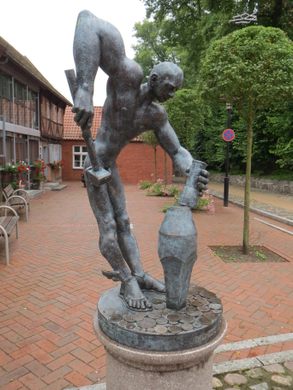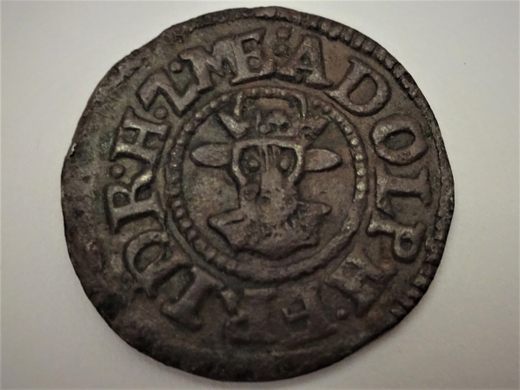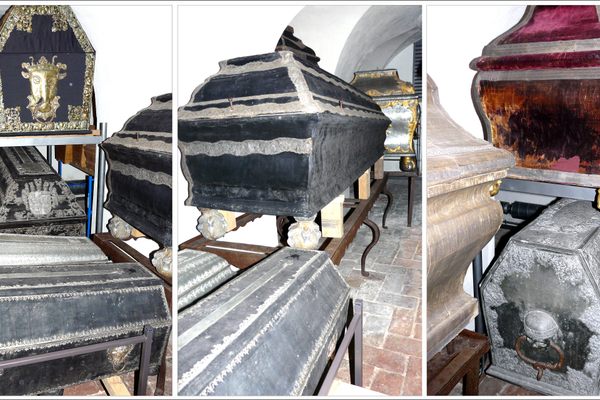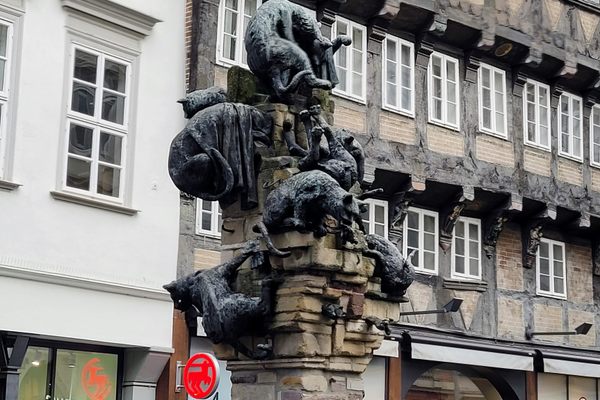'Gadebuscher Münzschläger'
This unusual sculpture depicts how coins were made when minting was done by hand.
Before the advent of minting machinery, coins were individually crafted by hand. Referred to as hammered coinage, they were created by placing a blank piece of metal (called flan) between two dies. The metal was then struck on an anvil.
During the late 16th-century, the town of Gadebusch was granted the right to mint and produced a number of silver coins for the Principality of Mecklenburg. The mint itself is not widely known due to its relatively short period of production, but the town appreciates its historic value today.
Titled “Münzschläger,” the monument was created by German sculptor Wolfgang Knorr and unveiled in 2011. It depicts a moneyer who is about to strike the die to stamp an engraving on a silver flan. His right arm is disproportionately larger than the left, emphasizing the muscles and dynamism. At his feet are a variety of coins, including thalers and schillings.
Plan Your Trip
The Atlas Obscura Podcast is Back!


















Follow us on Twitter to get the latest on the world's hidden wonders.
Like us on Facebook to get the latest on the world's hidden wonders.
Follow us on Twitter Like us on Facebook